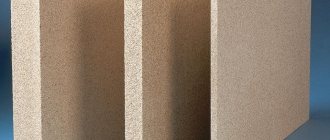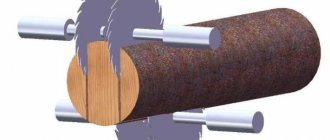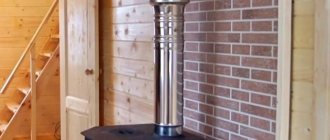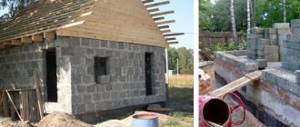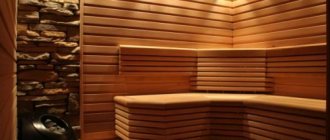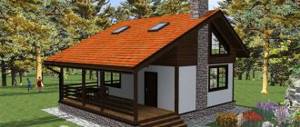Before people realized that asbestos was a material hazardous to health, it was widely used in a variety of areas of the national economy. Most often - during the construction of various buildings and structures. Until the seventies of the last century, this fibrous substance was especially valued for its excellent heat resistance and excellent resistance to weather conditions. However, scientists soon drew attention to some negative properties of asbestos. The harm to human health of this material and its impact on the environment have become the subject of many scientific studies.
Based on the results of the work carried out, this material was included in the list of the most dangerous substances according to the IARC classification; today it is considered one of the most dangerous carcinogenic substances. But why did people think about the destructive properties of this material? How much harm does asbestos actually cause to health? Let's try to figure it out.
What is asbestos?
Asbestos is a mineral substance belonging to the category of fine-fiber silicates. There are many deposits of it found in nature. In its natural form, it is a mineral compound that has a spatial structure in the form of the finest flexible fibers. There are two options in terms of structure:
- amphibole-asbestos – has a structure in the form of straight needle-shaped fibers;
- chrysotile asbestos, or white asbestos, has a structure in the form of serpentines, that is, complexly curved or twisted fibers.
Amphibole, in turn, is divided into two subgroups - crocidolites (blue asbestos) and amosites (brown asbestos).
Brittle amphibole asbestos is considered more dangerous: small and sharp particles inhaled by humans when the fibers break down are harmful to health. Once in the body, harmful dust does not dissolve and is not removed from the lungs - it remains there for life, gradually growing into the tissues and poisoning the owner.
Serpentines have a softer structure and are therefore considered less dangerous. They, unlike amphibole, quickly dissolve and are eliminated from the body without causing much harm.
Where was asbestos used?
During its heyday, this mineral substance was widely used in various types of production, in the automotive industry, shipbuilding, aircraft construction and, of course, in construction. To this day, we can find this substance in old residential buildings, where it was used in pipe insulation elements, ceiling and floor coverings, paints and finishing materials, as a cement additive and in the manufacture of roofing slates. This material was actively used in the construction of bathhouses on personal plots. Summer residents did not suspect that when asbestos is heated, the harm to health increases several times.
It was used in the production of consumer goods - heaters, household utensils, cosmetics, and even in the manufacture of children's crayons. At that time, it never occurred to anyone how dangerous small particles of asbestos could be.
The health damage resulting from exposure to this mineral was felt primarily by those people who participated in the production process.
Prevention
As preventive actions aimed at preventing the formation of mold, you should:
- Make sure there is adequate ventilation in the steam room. The problem is solved by installing a supply wall or window valve in each room.
- Create a small window in the steam room.
- Carry out periodic treatment with antiseptic agents. The composition must be applied in several layers.
- Regularly ventilate the steam room. After use, all sections of the steam room should be dried. For this purpose, doors and windows are left open. The rooms should be dried until the moisture completely disappears.
- Ensure reliable insulation and waterproofing of walls from the outside. Operations related to the laying of insulation and insulating materials are carried out at the construction stage.
- Inspect surfaces after winter ends. Sudden temperature changes during the winter months cause condensation to form.
By taking preventative measures, the risk of mold growth is minimized. To prevent mold from appearing in the steam room, you should understand the reasons for the appearance of fungi. Only after determining the factors of mold formation can you choose a method to combat the fungus.
First information about the dangers of the mineral
The first information about the dangers of asbestos to health began to arrive after examination of employees of mining mines, who also used this material in their work. Many workers were diagnosed with various pathologies, signs of cancer, and especially often there were disturbances in the functioning of the bronchopulmonary system.
After numerous studies, the International Agency for Research on Cancer published the result in 1987: asbestos is harmful to health. Lung cancer, mesothelioma, various fibrosis, asbestosis of varying severity and other types of cancer tumors appear in the human body precisely due to exposure to amphibole.
Where else is asbestos found?
This mineral is still present in outdated car models, some residential buildings, and old country houses. For many summer residents, asbestos in the bathhouse is a source of particular harm to health. After all, back in Soviet times it was used as a fire-resistant material for various coatings.
Asbestos does not burn, but when exposed to high temperatures it begins to break down, releasing harmful amphibole. Not all owners of country cottages are aware that they are exposing themselves and their household members to mortal danger.
Scope of application today
In Russia, despite the undoubted harm to health, asbestos is contained in more than 3,000 different products: it is used for the production of filters and tarpaulins, paper and cardboard, protective suits for firefighters and some asbestos-cement building materials. In our country, it is allowed to be used in many industrial technologies, but its use must be strictly controlled.
By the way, it’s worth making a reservation here. It is not the asbestos products themselves that are harmful to the human body, but the small particles of this mineral suspended in the air. Typically, the suspended state of fine asbestos dust can only be observed during mining, in some technological processes of various industries, or during the destruction of old buildings. To obtain harmful particles in domestic conditions, you will need to purposefully crush an asbestos-containing product (the same slate).
However, any product begins to deteriorate over time. As a result of aging, mineral fibers break down into fine dust, which can become an allergen for the human body. Once in the lungs, harmful asbestos remains there forever. When it grows into tissue, it causes enormous harm to health. Although the first signs of illness may appear only after a few years. It is known that in people who came into contact with such dust, various oncological formations appeared on average only after 7 years; in many patients it took even longer.
Specifications
- Thermal insulating building material has a sheet thickness of 6 millimeters.
- The length of the sheet is 1200 millimeters and the width is 600 millimeters.
- The technical parameter of the building material makes it possible to operate it in a temperature range from -200 to +700 degrees.
- The density of presspan is 600 kilograms per cubic meter.
- The building material has a moisture content by weight of less than 1 percent.
- It is permissible to compress the sheet by 20 percent.
- Cardboard has 5-10 percent organic matter.
- Low frequency sounds are absorbed by the material with a coefficient of 0.1, and medium frequency sounds - 0.45.
- Cardboard is characterized by a high level of resistance to mechanical damage. But this indicator does not affect its elasticity and pliability.
Might be interesting
Thermal insulation
Penoizol: self-production
Thermal insulation
Distinctive features and variety of ceiling tiles…
Thermal insulation
How to insulate the ceiling in a wooden house?
Thermal insulation
What is a heating cable?
Causes of the disease
It is still not clear how exactly asbestos dust causes lung diseases. Most likely, the development of pathologies occurs due to injury to the mucous membranes, which causes hyperplasia, metaplasia and proliferation of the epithelium. Manifestations of metaplasia are associated with the chemical composition of certain types of mineral containing kieselguhr. There are opinions that the occurrence of oncological diseases of the bronchopulmonary system is promoted not by the chemical properties of asbestos, but by severe bronchiectasis changes that occur as a result of constant inhalation of dust.
However, in any case, the disease is based on inflammatory processes of the respiratory tract in the form of chronic nasopharyngitis and bronchiolitis, caused by mechanical and chemical exposure to asbestos dust.
Take care of yourself and your loved ones! Do not be exposed to harmful dust!
If you are planning to build a bathhouse, then during construction you are probably planning to use the material that we will talk about in our article. However, during installation the question may arise as to whether asbestos is harmful to health when heated. Let's talk about this, the properties of the construction product and its analogues.
What is asbestos
This building material consists of fine-fibered minerals. It tolerates high temperatures well, withstands fire, and is very strong and elastic. Now in construction stores and markets you can find both individual sheets and see this substance as part of cement mixtures and other building materials.
Properties of asbestos
It has found wide application in the construction industry due to its special properties:
- Low electrical conductivity
- Heat resistance
- Resistance to radiation exposure
- Gas absorption capacity
2 types of material
- Chrysotile asbestos is a multilayer silicate that withstands alkali well. It is this substance that can most often be found on the Russian market.
- Amphibole - despite similar physical properties to the previous type, it has its own structure. It is not used as often as the first one, since it is significantly inferior in quality. In addition, many countries have banned its use because it emits substances hazardous to health.
They also differ in color, composition and length of the fibrous component, which subsequently affects wear resistance and durability.
Cladding with cladding
This option is practically no different from the previous one, however, if you don’t know how to decorate the wall behind the stove in the steam room in such a way as to preserve the beauty of the room while creating safe conditions, then this option is undoubtedly for you. Protect the walls using heat-resistant decorative materials laid on thermal insulation.
The finishing around the stove in the bathhouse can be done with the following materials:
- Clinker tiles are made from baked clay. It is characterized by high strength, heat resistance and durability. One of the advantages of this option is also the rich color palette, which includes not only black and white tones, but also blue or green colors;
- Terracotta tiles are also made from clay, but they are inferior to the previous option in terms of density and the number of possible colors;
- Soapstone is a good cladding option for a bathhouse, made from rocks of green and grayish shades. Has good heat resistance and strength;
- Tiles are ordinary ceramic tiles, characterized by good heat resistance and a pattern on their surface;
- Porcelain tiles are heat-resistant tiles that imitate natural stone or wood.
The tile will not dissipate heat, protecting the walls from fire, so it cannot be mounted directly on the wall. We recommend using the following design:
- Wall;
- Clearance for ventilation;
- Fireproof material;
- Tiles (the distance from the tile to the stove must be at least 15 cm).
Such a “pie” will create reliable protection for walls from heat, preserving the beauty of the room.
One of the following options can be used as a fireproof material:
- Fireproof drywall - made from the same materials as regular drywall, but using fiberglass;
- Minerite slabs for baths are absolutely not exposed to moisture and heat.
- Glass-magnesium sheet - plates made of fiberglass and magnesium binder. Excellent resistance to heat, moisture and noise.
This option will perfectly protect your bathhouse from the possibility of fire, and will also insulate the room, preserving its aesthetic component.
Where is it used
If you study the question of what asbestos is needed for, you will notice that it is used in various fields, including industrial production and construction.
Construction
In installation work, its fire resistance and thermal insulation are especially valued. Therefore, very often when installing wall panels or laying floors, asbestos boards or wool made from the same substance are used.
Mechanical engineering and metallurgy
Cables and various metal and concrete structures are usually treated with this mineral in the form of spraying. This is how they acquire fire-resistant properties.
In addition, in some houses, cement pipes with the addition of this substance are installed. It is thanks to him that they become stronger and more durable.
Chemical industry
Asbestos has also found application in the chemical field, where it is used to make various plastics, paper and paint and varnish products.
Textile industry
Here this mineral is used in the manufacture of fabrics for workwear. It is used to make protective gloves, helmets and suits. In addition, brake flanges and pipe seals are also made with its addition.
Is it harmful to health?
There is a popular belief that building materials are extremely dangerous to human health due to harmful fumes. There is another version that speaks of its safety, which has not yet been definitely confirmed. Let's look at why asbestos is dangerous.
Indeed, prolonged contact with the material during installation can have a detrimental effect on the body. For example, occupational diseases associated with this fibrous substance include chronic respiratory diseases, fibrosis and even lung cancer.
The occurrence of these diseases is due to the fact that when inhaling dust particles from asbestos, its fibers are not removed from the lungs, but settle there for life. Thus, they gradually destroy the organ and harm health. However, you can only get sick if a person stays in a place with such dust for a very long time.
The substance only when combined with cement does not emit any harmful fumes and is completely safe for humans. But it is still better to refrain from using it in a bathhouse, since with periodic heating it can crumble over time. And this will lead to the spread of dangerous dust in the air.
Brick screens
The furnace fence in the steam room can also be made of brick. A brick screen can be installed on all sides of a metal furnace, forming a protective lining. Also, such a screen can only be installed between the flammable surface and the stove, representing a protective wall.
Having decided to lay such protection, use solid fireclay bricks, for the binding of which you can use clay or cement mortar. Typically, half-brick masonry (120 mm) is used, but due to lack of material, quarter-brick masonry (60 mm) is suitable. When using the latter installation method, remember that the thermal insulation properties of such a screen are reduced, so the distance to the wall should be increased.
This finishing of an iron stove in a bathhouse is also carried out in compliance with certain rules:
- In the lower part of the shield it is necessary to provide special openings that will ensure air convection between the furnace wall and the brick;
- The height of the brick wall should exceed the height of the stove by 20 cm, but it is often built right up to the ceiling;
- Maintain a distance of 5-15 cm between the stove and brick screens;
- There should also be a distance of 5-15 cm between the flammable surface, for example, a wall and a brick protection.
How to replace asbestos
Now there is a huge selection of materials that have the same properties and are well suited for replacement.
Insulation in a roll
He makes three types of mineral wool:
- Basalt wool
- Glass wool
- Slag
Each type is suitable for certain types of work. In accordance with the instructions, select exactly the analogue that you need.
This building material is heat resistant and retains heat well.
Foam glass
This material is lightweight, durable, fire resistant and waterproof. It provides not only thermal insulation, but also has the ability to muffle sound.
Fire-resistant drywall (GKLO)
If it is necessary to insulate the wall in the bathhouse, which is located near the stove, you can use gypsum plasterboard. This fire-resistant material can also withstand high temperatures and does not emit harmful substances when heated.
Kinds
Protective impregnations for wooden surfaces are divided into groups depending on the main component in their composition, as well as on the properties and method of application. According to the form of release, antiseptics are:
- aerosol;
- gel;
- in the form of a solution.
All types of impregnations for baths and saunas have water-repellent properties. Modern impregnations for baths rarely have only one function; they can often be used as universal preparations that can also protect wooden surfaces from the negative effects of elevated temperatures, excessive humidity and from damage by pathogenic microorganisms and harmful insects.
Based on their composition, the products are divided into water-soluble and oil-based. You can purchase a combined product in the form of varnish and paint, which is characterized by the effect of moisture protection and prevention from microorganisms. Most impregnations have additional performance qualities in the form of fire resistance and dirt-repellent function.
Is asbestos harmful?
Asbestos dust is a carcinogen
upon contact with the respiratory tract. You can verify SanPiN 1.2.2353-08 “Carcinogenic factors and basic requirements for the prevention of carcinogenic hazards”
Asbestos dust causes great harm. During work, namely drilling, cutting and other activities, it releases a lot of dust, which, when it enters the respiratory tract, settles in them and is not removed by anything. This dust causes lung cancer and there is also a disease called Asbestosis.
The photo shows the consequences of working with Asbestos. High magnification micrograph of pulmonary asbestosis, with characteristic glandular bodies and interstitial fibrosis. Lung biopsy. H&E stain.
Based on the results of comprehensive scientific studies of carcinogens, the International Agency for Research on Cancer has classified asbestos in the first, most dangerous category of the list of carcinogens for which there is reliable evidence of their carcinogenicity to humans.
It can be argued that asbestos itself is not harmful, but its dust is. Those. If you cut it in a respirator and twist it in a bathhouse, and then clean it up, then everything will be fine. Not really! Don't forget that any structure is alive and moves. Especially the bathhouse. It doesn’t matter what material it is made of, there are still small movements during which the asbestos will rub and release dust, and the microclimate of the steam room will do its job to move it in the steam room.
Dust is also treacherous. It does not manifest itself immediately, accumulates for years, and then deals a crushing blow to the body. In Europe, the use of asbestos has been banned since 2005.
What do we get in the end? Using asbestos in the construction of baths, you can collect stones at the mining and processing plant and put them in the heater. It will not be worse.
Friends, we are building a bathhouse to heal the soul and body. Let's not skimp on our health and use environmentally friendly materials. We are already surrounded by harmful substances, let’s not aggravate our situation with our own actions. In addition, there are alternatives in different price segments. Peace and goodness to everyone!
How to perform insulation
Thermal insulation of bathhouse walls is carried out comprehensively, always insulating the building from the inside, and in some cases, both from the outside and from the inside. Log and lumber bathhouses, as a rule, are not insulated from the outside, and only from the inside - a steam room and a washing room. Baths made of bricks and foam blocks - materials with high thermal conductivity - must be insulated from the outside to ensure the necessary temperature conditions inside the building. To insulate the bathhouse externally, first install the sheathing, secure the thermal insulation, wind and moisture-proof membrane, and at the final stage - the outer cladding.
Stages of insulation of bathhouse walls from the inside
- Cleaning, sealing and filling of cracks in the base base. The walls of a bathhouse made of logs or timber are caulked with jute or linen insulation, minor defects in brick and foam concrete planes are corrected with sealants.
- Treatment with antiseptics that prevent the spread of pathogenic microorganisms and fire retardants that reduce the likelihood of fire.
- Installation of wooden sheathing for installation of heat insulator. The width of the lathing step is selected based on the width of the insulation (1 cm less), and the thickness of the bars is based on its thickness.
- Installation of insulation. By cutting a roll of mineral wool into strips of the required width or using slabs of a certain standard size, you can ideally install the material in the wooden frame of the bathhouse - in the spacer between the guides of the sheathing.
- Installation of vapor barrier. The optimal material for quickly insulating a bathhouse with your own hands is a rolled or slab mineral wool insulator with a foil layer. It’s like a “2 in 1” - a material that can significantly reduce installation time and acts as an effective heat protection and vapor barrier. If the insulation does not have a metallized coating, then it is recommended to cover it with a vapor barrier film with an overlap of at least 5 cm, for example, Ondutis R Termo - a vapor barrier with heat-saving properties that can withstand temperatures up to +120 degrees and returns 80% of the heat back into the room. After installation, all joints of the insulator are glued with foil (aluminum) tape.
- Finishing. The inside of the bathhouse is traditionally sheathed with wooden clapboard, for the installation of which an additional 2-3 cm thick batten is attached to the sheathing fixed for installing the insulation. It will serve as the basis for fastening the clapboard and will create the necessary ventilation gap between the front sheathing and the vapor barrier. This way, the condensate that forms can flow down unhindered, leaving the lining dry.
